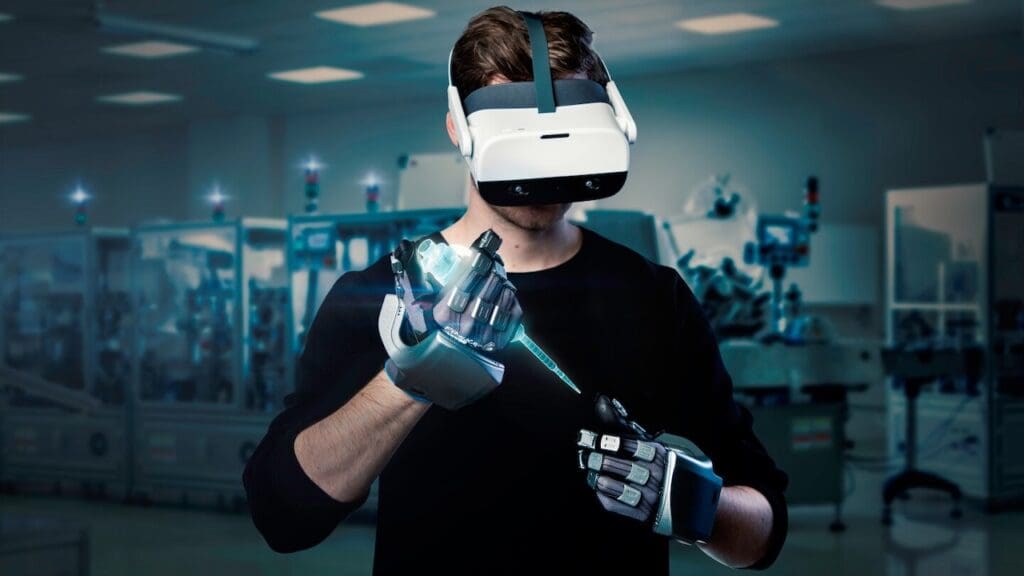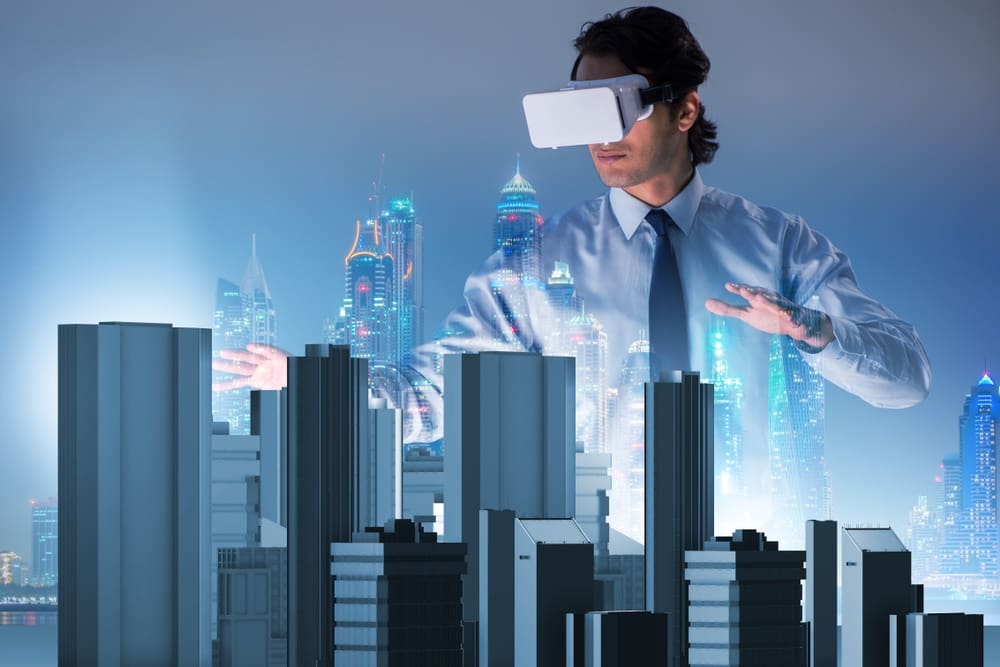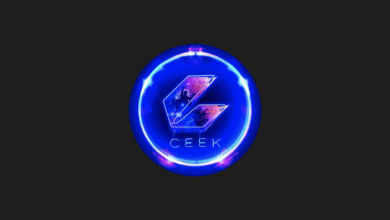
The layers that make up the metaverse economy
The excitement surrounding the metaverse is rapidly growing, with individuals and companies vying to be part of these virtual platforms. The emergence of a rapidly expanding virtual world seems inevitable, and whether we actively seek it or not, we are likely to enter this realm from various avenues.
According to Industry Analyst Consensus research from CB Insights, the metaverse has the potential to become a $1 trillion market by the end of the next decade. It’s crucial to analyze the layers that constitute a market of this magnitude, especially considering that all the companies within these layers, as outlined below, currently hold Unicorn status. This reinforces the prediction that metaverse platforms will indeed create a market worth $1 trillion.
Below, I provide a summary of the layers that form the metaverse economy, based on CB Insights’ classification.
Infrastructure (network and computing)

The metaverse demands a robust computing and processor infrastructure capable of supporting large data streams and high-speed operations. The key requirements for this infrastructure include:
Chips and Processors: Advancements in chips and processors are crucial to meet the compute-intensive and speed requirements of applications running on metaverse platforms.
Prominent companies in this field include Chips&processors, TSMC, Qualcomm, NVIDIA, Samsung, and Intel.
5G and Low Latency Networks: 5G technology plays a vital role in supporting reliable, flexible, and low-latency networks for connected devices, enabling high-resolution metaverse applications to run more effectively.
Featured companies include AT&T, China Mobile, Comcast, T-Mobile, and Verizon.
Cloud Infrastructure: Cloud infrastructure is essential for metaverse companies, particularly those hosting virtual worlds and experiences, to store and process the massive amounts of data they generate.
Featured companies in this domain include Azure, AWS, Google Cloud, Alibaba Cloud, and VMware.
Edge Infrastructure: Edge computing is utilized for metaverse applications that require real-time operations, such as AR/VR and gaming.
Featured companies providing edge infrastructure services include Akamai, Edgeconnex, Vapar, Edgemicro, Stackpath, and Zenlayer.
Access/interface (Hardware)

This layer encompasses hardware devices that enable individuals to immerse themselves in the metaverse world. This category includes connected devices such as smartphones, computers, and game consoles, but more importantly, it involves new technologies designed to enhance immersion in a virtual environment. The technologies within this layer are outlined below:
Haptics: Haptic technology refers to the tactile sensations created by AR/VR devices and other devices used within the virtual environment. Haptic startups are working on technologies that enhance the sense of touch.
Featured companies in this domain include Teslasuit, Haptx, Sense Glove, Manus, Fundamental VR, and Lofelt.
Virtual Reality (VR) and Augmented Reality Glasses: VR and AR glasses play a crucial role in utilizing Metaverse applications with the desired quality and realism. Companies are striving to develop products that are accessible to everyone, with a focus on making these glasses lightweight and easily portable.
Featured companies include VR – Oculus VR, Pimax, Unai, Vive, Pico, DPVR, and AR – Magic Leap, Mojo, Llvision, nreal, Realmax, Rokid, AXADGAZE, Pacific Future.
Holographic: Companies in this category develop holographic technologies to project 3D objects into physical spaces. Holograms are expected to be a significant element of the metaverse world.
Featured companies in this field include See Real, IKIN, Looking Glass, Campfire, Light Field lab, Kino.mo, Base Hologram, Vivido, and Real View.
Virtualization tools

These organizations are dedicated to the development of software development kits (SDKs), game engines, 3D scanning technology, and other developer tools to assist 3D content designers in creating metaverse experiences and applications. The key technologies and tools in this category include:
3D Design Engines: Companies in this category produce tools such as game engines and animated visual effects that designers can utilize to create visual elements within the metaverse.
Featured companies: Unity, Unreal, Cocos, Cryengine, N.Light, Godot, Gritworld, Blender.
3D Modeling: Companies in this category aid brands in representing their physical products or environments in 3D. This technology is gaining popularity among metaverse firms aiming to help consumers better understand their products.
Featured companies: Expivi, Vntana, Threedium, Threedy.ai, Threekit, VirtualFlow, 3XR, Jump Into Reality, Occipital.
AR Developer Kits: These companies provide software development kits (SDKs) to enhance AR application development. Given that AR is still not widely adopted, it can be considered early days for companies in this category.
Featured companies: Blippar, EasyAR, Niantic, Maxst, ARCore, Wikitude, Amazon Sumerian.
Avatar Development: Avatars are crucial tools for individuals, games, and brands to interact with in the metaverse. This business is not only conducted by large companies but also by individuals experienced in the virtual world.
Featured companies: Didimo, Alter, Pinscreen, Animatico, Uneeq, Ready Player Me.
Volumetric Video: To capture real images in 3D, people, objects, or locations to be imaged are recorded from various perspectives. This technology is extremely useful for producing content for media, gaming, and VR applications, which are vital to the metaverse.
Featured companies: Cappasity, Depthkit, Volograms, Condense Reality, Tetavi, Holo Cap, Holotch, DGene, Omnivor.
Virtual worlds

Virtual worlds serve as gathering places in the metaverse, characterized by user-centric experiences and economies. These worlds can be categorized into two main types:
Centralized Worlds: In a centralized virtual world, one or more companies have control over the rules, products, and experiences within their platform. It often offers a socially oriented environment where users can come together and engage with interactive tools.
Featured companies in this category include Roblox, Linden Lab, VR Chat, Minecraft, and Recroom.
Decentralized Worlds: Decentralized virtual worlds provide experiences similar to centralized virtual worlds but are built using blockchain technology. These worlds aim to distribute control and ownership among users through blockchain mechanisms.
Featured companies in this category include Sandbox, DV, Somnium Space, Decentraland, and @Portals.
Financial infrastructure

This layer encompasses technology that facilitates buying, selling, and storing goods and services within the metaverse environment. Despite the increasing popularity of cryptocurrencies and NFTs, companies in this field face the challenge of reaching only a small portion of users, as they operate within decentralized metaverses. Centralized metaverse platforms, on the other hand, rely on traditional payment systems, ensuring broader accessibility. The payment systems used in metaverse platforms include:
Traditional Payment Systems: Metaverse platforms continue to use traditional payment methods. For example, PayPal is already utilized to purchase virtual currencies in platforms like Roblox, Minecraft, and Second Life. Minecraft accepts various payment methods, including Visa, Google Pay, Apple Pay, and Mastercard, for the sale of its own currency, Minecoin.
Cryptocurrency Platforms: Companies in this category enable decentralized metaverses to trade their currencies through their platforms. For instance, Sandbox’s cryptocurrency can be traded on platforms such as Sand, Gemini, Crypto.com, and Binance. Similarly, MANA, the Decentraland-specific cryptocurrency, can be purchased from Coinbase, Kraken, and others.
Crypto Wallets: Crypto wallets serve as credentials for logging into decentralized metaverses, and no monetary transactions can be made without them. However, each metaverse platform only allows the use of wallets from their contracted companies. Featured companies in this domain include Bitski, Metamask, Venly, and Trust Wallet.
NFT Marketplaces: NFT marketplaces enhance trading in decentralized metaverses by providing platforms for users to buy and sell NFTs ranging from virtual land to avatar outfits and virtual assets. NFTs are not limited to the metaverse; people can buy and sell NFTs of tweets, videos, or artworks without joining any metaverse platforms. However, NFTs must be registered on a blockchain for ownership to be proven. Featured companies in this category include Dapper, Rarible, Magic Eden, OpenSea, and Dmarket.
Intra-metaverse trading

This layer represents the trade volume generated from the exchange of any digital value within the metaverse. Central and decentralized platform games play a prominent role in shaping this trade volume. Startups heavily invest in areas such as games developed with VR/AR technology, virtual concerts, virtual fashion, and virtual real estate. Featured companies in this domain include:
AR/VR Games:
- Illumix
- Survios
- Forevr
- Omni
- Resolution
- Nolo
- Polyarc
Decentralized Metaverse Games:
- Yugalabs
- Mythical
- Splinterlands
Virtual Concerts:
- Amaze
- Pixelynx
- Wave
- Ristband
- Noys VR
- Melody VR
Virtual Fashion:
- Dressx
- Bigthinx
- RTFKT
- Aglet
- BNV
- StarHeir
- The Fabricant
Virtual Real Estate:
- Metaverse Group
- Everyrealm
Virtual Works In Metaverse:
- Cosmos
- MeetinVR
- Iris
- vSpatial
- Cavrnus
- Vibe
- Spatial
- SpaceVR
- Dreamscape
- SmartGuide
You may also like this content
- The Metaverse: What it is, How to Enter, and Its Potential Impact
- Metaverse 5 Reasons Why its Awesome
- Metaverse Coins Buying Guide
Follow us on TWITTER (X) and be instantly informed about the latest developments…










